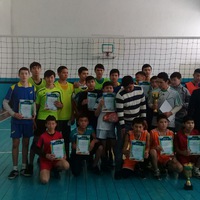
Какие изменения происходят В процессе горения свечи или спички?Какие вещества при этом
образуются?Можно ли вернуть в первоначальноесостояние свечу и спичку? Почему? 0
0
 0
0
Ответы на вопрос
 Внимание! Ответы на вопросы дают живые люди. Они могут содержать ошибочную информацию, заблуждения, а также ответы могут быть сгенерированы нейросетями. Будьте внимательны. Если вы уверены, что ответ неверный, нажмите кнопку "Пожаловаться" под ответом.
Внимание! Ответы на вопросы дают живые люди. Они могут содержать ошибочную информацию, заблуждения, а также ответы могут быть сгенерированы нейросетями. Будьте внимательны. Если вы уверены, что ответ неверный, нажмите кнопку "Пожаловаться" под ответом.

Ответ:
В процессе горения происходит нагрев верхней части свечи, слышится небольшой треск и выделяется теплота. При движении воздуха пламя свечи отклоняется. Скорость горения свечи зависит от её толщины и длины. В процессе горения фитиль постепенно сгорает. Жидкость у основания фитиля – это расплавленный воск.
Если так будет удобнее.
 0
0
 0
0

Changes during the Burning Process of a Candle or Match
When a candle or match burns, several changes occur in the process. Let's explore these changes in detail:
1. Combustion: Combustion is the chemical reaction that occurs when a candle or match burns. It involves the rapid oxidation of the fuel (wax in the case of a candle, and the matchstick in the case of a match) in the presence of oxygen from the air. This reaction releases energy in the form of heat and light.
2. Melting and Vaporization: As the candle burns, the heat from the flame melts the solid wax, turning it into a liquid. The liquid wax is then drawn up the wick through capillary action. Once the liquid wax reaches the flame, it vaporizes and turns into a gas. It is this vaporized wax that actually burns and produces the flame.
3. Oxidation: The vaporized wax combines with oxygen from the air in a process called oxidation. This chemical reaction produces carbon dioxide (CO2) and water vapor (H2O). The carbon dioxide is released into the air, while the water vapor may condense into tiny droplets, forming the visible smoke or steam that we see when a candle burns.
4. Heat and Light: The energy released during the combustion process is primarily in the form of heat and light. The heat warms the surrounding air, causing it to rise and creating air currents. The light emitted by the flame is a result of incandescent particles in the flame reaching high temperatures and glowing.
5. Soot Formation: Incomplete combustion can lead to the formation of soot. Soot consists of tiny carbon particles that are released when the fuel does not burn completely. Soot can accumulate on the wick, candle holder, or nearby surfaces, causing blackening.
Substances Formed during the Burning Process
During the burning process of a candle or match, several substances are formed. These include:
1. Carbon Dioxide (CO2): The primary product of combustion is carbon dioxide. It is a colorless and odorless gas that is released into the air. Carbon dioxide is a greenhouse gas and contributes to global warming.
2. Water Vapor (H2O): Another product of combustion is water vapor. It is formed when the hydrogen atoms in the wax combine with oxygen from the air. Water vapor may condense into visible droplets, creating smoke or steam.
3. Soot: Incomplete combustion can result in the formation of soot. Soot consists of tiny carbon particles that are released when the fuel does not burn completely. It appears as black particles and can contribute to air pollution.
Reversibility of the Burning Process
Once a candle or match has burned, it is not possible to return it to its original state. The burning process involves irreversible chemical reactions, such as the oxidation of the fuel and the formation of carbon dioxide and water vapor. These reactions release energy and transform the fuel into new substances.
Reversing the burning process would require reversing these chemical reactions, which is not feasible. Additionally, the physical changes, such as the melting and vaporization of the wax, cannot be reversed either.
Therefore, once a candle or match has burned, it cannot be restored to its original state.
I hope this explanation helps! Let me know if you have any further questions.
 0
0
 0
0
Похожие вопросы
Топ вопросов за вчера в категории Другие предметы
Последние заданные вопросы в категории Другие предметы
-
Математика
-
Литература
-
Алгебра
-
Русский язык
-
Геометрия
-
Английский язык
-
Химия
-
Физика
-
Биология
-
Другие предметы
-
История
-
Обществознание
-
Окружающий мир
-
География
-
Українська мова
-
Информатика
-
Українська література
-
Қазақ тiлi
-
Экономика
-
Музыка
-
Право
-
Беларуская мова
-
Французский язык
-
Немецкий язык
-
МХК
-
ОБЖ
-
Психология
-
Физкультура и спорт
-
Астрономия
-
Кыргыз тили
-
Оʻzbek tili

























